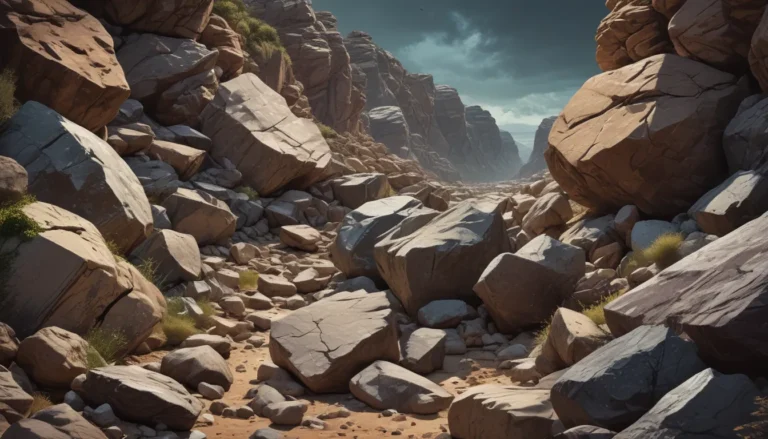A Note About Images: The images used in our articles are for illustration purposes only and may not exactly match the content. They are meant to engage readers, but the text should be relied upon for accurate information.
Embark on a journey to uncover the mysteries and marvels of the Eastern Continental Divide, a fascinating geological feature that shapes the landscapes and ecosystems of the eastern United States. From its influential role in directing water flow to its impact on human settlements and biodiversity, the Eastern Continental Divide is a tapestry of natural wonders waiting to be explored. In this article, we will delve into 11 intriguing facts about this remarkable divide, shedding light on its significance and the captivating elements that define it. Let’s discover the beauty and importance of the Eastern Continental Divide together.
Understanding the Eastern Continental Divide
The Eastern Continental Divide serves as a watershed, separating the watersheds that drain into the Atlantic Ocean from those that flow into the Gulf of Mexico. Stretching from the northern part of Pennsylvania through the Appalachian Mountains to central Alabama, this natural boundary plays a crucial role in determining the direction of water flow across the eastern United States.
Key Takeaways:
- The Eastern Continental Divide influences human settlements, inspires conservation efforts, and offers scenic hiking trails.
- This geographical feature symbolizes the delicate balance of nature and plays a pivotal role in shaping the environment and human activities in the region.
The Backbone: Appalachian Mountains
The Appalachian Mountains act as the primary topographic feature that defines the Eastern Continental Divide. Stretching from Alabama to Canada, this extensive mountain range creates a natural barrier that influences weather patterns, ecosystems, and human activities in the eastern United States.
Impact on Ecosystems and Biodiversity
The direction of water flow determined by the Eastern Continental Divide significantly impacts ecosystems and biodiversity in the region. The differing environmental conditions on either side of the divide lead to diverse habitats and species distributions, shaping the natural landscapes and wildlife found in the area.
Influence on Human Settlements and Infrastructure
Historically, the Eastern Continental Divide has influenced human settlements and infrastructure development in the eastern United States. The direction of water flow has played a role in determining where communities were established and how transportation networks were constructed to navigate the varied terrain created by this geographical boundary.
Water Resource Management
Water resource management is intricately linked to the Eastern Continental Divide. The divide’s influence on water flow patterns has implications for water supply, usage, and conservation efforts in the region. Understanding the divide is essential for effectively managing water resources and mitigating potential environmental impacts.
Scenic Hiking Trails
Outdoor enthusiasts have the opportunity to explore scenic hiking trails along the Eastern Continental Divide. The diverse landscapes and unique ecosystems make it a popular destination for those seeking adventure and natural beauty.
Conservation Efforts Inspired
The unique environmental characteristics associated with the Eastern Continental Divide inspire conservation efforts aimed at preserving natural landscapes, protecting wildlife habitats, and promoting sustainable practices in the region.
Geographical Exploration
Researchers and geographers are drawn to the Eastern Continental Divide to study its impact on the environment and gain insights into the interconnected natural systems within the eastern United States.
Symbol of Natural Boundaries
The Eastern Continental Divide symbolizes the natural boundaries that shape the landscape and ecosystems of the eastern United States, highlighting the significance of understanding and respecting these divisions.
Captivating Nature Enthusiasts
The influence of the Eastern Continental Divide on landscapes, waterways, and biodiversity captivates nature enthusiasts, sparking curiosity and appreciation for the diverse environments it creates.
The Eastern Continental Divide continues to play a pivotal role in shaping the geographical and environmental narrative of the eastern United States, as a symbol of nature’s intricate balance.
Conclusion
In conclusion, the Eastern Continental Divide is a remarkable geological feature that shapes the flow of water across North America. Its influence on rivers and drainage patterns has a profound impact on the environment and human activities in the region. Exploring the geological and hydrological importance of the Eastern Continental Divide enriches our understanding of the interconnected natural systems that define our planet. From the Appalachian Mountains to the Gulf of Mexico and the Atlantic Ocean, this divide stands as a testament to the fascinating forces that have shaped the Earth over millennia.
FAQs
What is the Eastern Continental Divide?
The Eastern Continental Divide is a geological feature that separates watersheds draining into the Atlantic Ocean from those draining into the Gulf of Mexico.
How was the Eastern Continental Divide formed?
Through gradual geological processes of uplift and erosion, a distinct ridge was formed that determines water flow across the continent.
Our commitment to delivering trustworthy and engaging content ensures that each fact on our site is contributed by real users, bringing a wealth of diverse insights and information. Trust in our dedication to quality and authenticity as you explore and learn with us.






